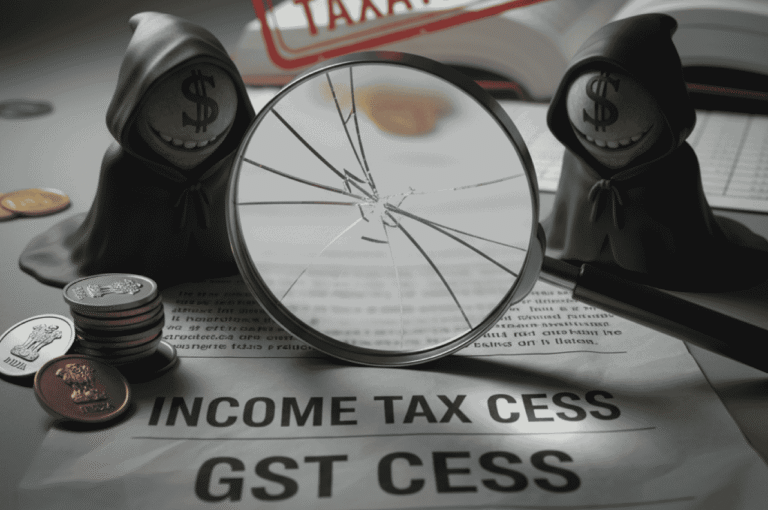Managing your money wisely isn’t just about budgeting and saving – it’s also about understanding how taxes work, especially if you’re running a business, freelancing internationally, or dealing with cross-border transactions.
One of the most important taxes worldwide is the Goods and Services Tax (GST) – a tax that affects almost every product and service we buy. Whether you live in Canada, India, Australia, or Singapore, GST (or its cousin VAT) plays a big role in prices, profits, and paperwork.
In this post, we’ll walk you through the key GST terms or Global Goods and Services Tax Glossary you need to know—in plain, simple language—to stay on top of your money.
What Is GST?
GST (Goods and Services Tax) is a consumption tax applied to the sale of most goods and services. It’s charged at each step of the supply chain, but the final burden is on the consumer.
In some countries, it’s called VAT (Value-Added Tax)—they work similarly, with slight differences.
Most Used Goods and Services Tax Glossary
1. Input Tax Credit (ITC)
This is a refund or credit for the tax you pay on business expenses.
For Example: You buy raw materials and pay GST. You then use those materials to make your product. You can subtract the GST you already paid from the GST you collect when you sell your product.
2. Output Tax
This is the GST you collect from customers when you sell goods or services.
Think of this as the tax you charge others for your product or service.
3. Exempt Supplies
These are products or services that don’t attract any GST, and you can’t claim ITC on inputs used to supply them.
Examples:
Health care, education services (in many countries).
4. Zero-Rated Supplies
These are also taxed at 0%, but unlike exempt supplies, you can claim ITC on the inputs.
Common example: Exports in most countries.
5. Reverse Charge Mechanism (RCM)
Normally, the seller collects GST from the buyer. But under RCM, the buyer pays the tax directly to the government.
Often used when buying from unregistered suppliers or cross-border services.
6. Tax Invoice
This is a document issued by a seller showing the GST charged.
A valid invoice is required to claim Input Tax Credit.
7. Place of Supply
This term decides which jurisdiction (state or country) gets the tax revenue.
Important in international or inter-state transactions.
8. Registration Threshold
Businesses must register for GST once their sales reach a certain amount. This limit varies by country.
Example: In India, the threshold is ₹20–40 lakhs. In Singapore, it’s SGD 1 million.
9. Composite Supply / Mixed Supply
- Composite Supply: Goods/services bundled together naturally (e.g., flight ticket with meals).
- Mixed Supply: Two or more independent items sold together (e.g., Diwali gift hamper).
Tax treatment differs based on type.
10. Input Service Distributor (ISD) (India-specific)
A business office that distributes input tax credits to branches. Useful for centralized billing.
11. HSN / SAC Codes
- HSN (Harmonized System of Nomenclature): Used for classifying goods.
- SAC (Service Accounting Code): Used for services.
Needed for identifying the correct GST rate.
12. GSTR (India-specific)
These are return forms filed monthly or quarterly, like:
- GSTR-1: Outward sales.
- GSTR-3B: Summary return of sales, purchases, tax paid.
13. CGST, SGST, IGST (India-specific)
- CGST: Central GST
- SGST: State GST
- IGST: Integrated GST (for interstate or international trade)
These help split revenue between central and state governments.
14. VAT (Value-Added Tax)
A similar tax used in Europe, UAE, South Africa, and others. Like GST, VAT is collected at each stage of production and is creditable.
In the UK, it’s 20%. In the UAE, it’s 5%.
Other Goods and Services Tax (GST) Essential Glossary
Assessment: The determination of tax liability by the tax authority or the taxpayer.
Audit: A detailed examination of financial records and transactions to verify compliance with GST laws.
Business-to-Business (B2B): Transactions where both the buyer and seller are registered businesses; input tax credits can usually be claimed.
Business-to-Consumer (B2C): Transactions between a registered business and an unregistered end consumer; tax is generally borne by the final consumer.
Compliance: Meeting the GST filing and payment obligations under the law.
Consumption Tax: A tax levied on the consumption of goods and services, typically paid by the end consumer.
Credit Note: A document issued by a seller to reduce the amount of tax charged on an invoice due to returns or errors.
Destination-Based Taxation: A system where tax revenue accrues to the jurisdiction where goods or services are consumed, not where they are produced.
Digital Services Tax (DST): A separate tax applied in some countries on digital goods/services, sometimes overlapping with GST/VAT.
Exempt Supplies: Goods or services not subject to GST. No input tax credit can be claimed on them.
E-Invoicing: Electronic invoicing systems used to streamline GST reporting and compliance.
Filing Period: The period (monthly, quarterly, annually) for which a business must report and pay its GST.
Fiscal Invoice: A formal document issued to record a sale and applicable GST/VAT.
Goods and Services Tax (GST): A value-added tax on most goods and services sold for domestic consumption. Adopted in countries like Canada, Australia, India, Singapore, and Malaysia.
Harmonized Sales Tax (HST): A combination of federal and provincial sales taxes in Canada into a single value-added tax.
Input Tax: GST paid by a business on purchases of goods or services used for business purposes.
Input Tax Credit (ITC): A credit for the GST paid on inputs used to make taxable supplies. This credit is deducted from the GST liability on sales.
Intrastate Supply: A transaction where the supplier and recipient are located within the same state or province.
Import GST: GST levied on imported goods or services.
Jurisdiction: The geographic area (state, province, country) with authority to impose and collect GST.
Liability to Tax: The obligation of a person or business to pay GST under the law.
Mixed Supply: A combination of goods or services sold together, where each item is taxed separately.
Multi-Stage Tax: A tax collected at each stage of production and distribution, as in the GST system.
Nil-Rated Supplies: Goods or services taxable at 0% GST. Input tax credit may still be claimed.
Output Tax: GST collected by a registered person on the supply of goods and services.
Place of Supply: The location where a transaction is deemed to have occurred for tax purposes, used to determine which jurisdiction can collect the GST.
Progressive Filing: A method of filing returns incrementally, often used in real-time or continuous reporting systems.
Reverse Charge Mechanism (RCM): A system where the recipient of goods/services is required to pay GST instead of the supplier.
Registration Threshold: The minimum turnover a business must have before it is required to register for GST.
Standard Rate: The usual rate of GST applied to most goods and services in a country.
Supply: Includes all forms of sale, transfer, barter, exchange, license, rental, or disposal made for a consideration.
Tax Invoice: A document issued by a registered business showing the GST charged on a supply.
Tax Period: The period for which a business must file its GST returns.
Threshold Limit: See Registration Threshold.
Value-Added Tax (VAT): Often used interchangeably with GST in many countries. VAT is also a consumption tax levied at each stage of the supply chain.
Voluntary Registration: When a business chooses to register for GST despite not reaching the registration threshold.
Zero-Rated Supplies: Taxable supplies charged at 0% GST. Businesses can still claim input tax credits.
Why Should You Care About GST?
Whether you’re:
- Running a small business,
- Freelancing across borders, or
- Buying/selling internationally,
…understanding these GST terms can save you money, prevent penalties, and improve your cash flow.
For example, if you don’t claim your Input Tax Credit, you may end up paying more tax than necessary. Or if you issue the wrong type of invoice, your client might reject it—delaying your payment.
Country-Specific GST Notes
| Country | Tax Type | Typical Rate | Unique Feature |
|---|---|---|---|
| India | GST | 0–28% | Dual GST: CGST + SGST or IGST |
| Canada | GST/HST | 5–15% | HST combines federal + provincial taxes |
| Australia | GST | 10% | Flat rate on most goods/services |
| Singapore | GST | 9% | Simple structure, rising in recent years |
| UAE | VAT | 5% | Applies to most goods/services |
| UK | VAT | 20% | Zero-rated & exempt categories |
Final Thoughts on Goods and Services Tax Glossary
Taxes can be complicated, but with a clear understanding of key GST terms, you can make smarter financial decisions—whether you’re filing returns, setting prices, or expanding globally.
Knowledge is power, especially when it saves you time, money, and stress.




